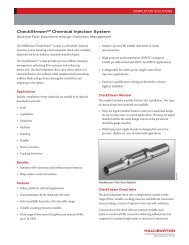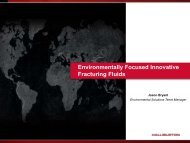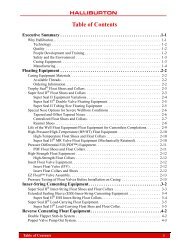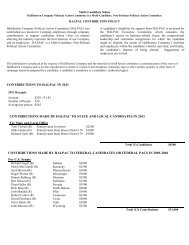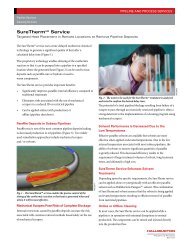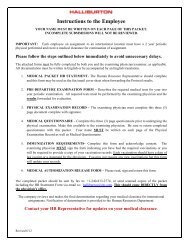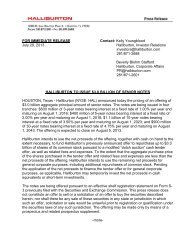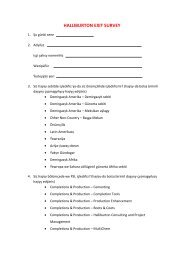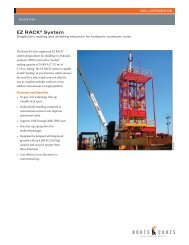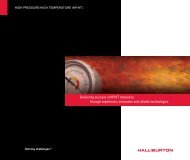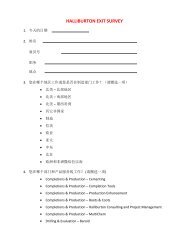Trends In Unconventional Gas - Halliburton
Trends In Unconventional Gas - Halliburton
Trends In Unconventional Gas - Halliburton
Create successful ePaper yourself
Turn your PDF publications into a flip-book with our unique Google optimized e-Paper software.
D r i l l i n g & Pr o d u c t i o n<br />
be efficiently fractured independently<br />
by:<br />
• Using coiled tubing or tubulars<br />
with hydrojetting techniques.<br />
• Using dynamic diversion techniques<br />
for either vertical or horizontal<br />
placement.<br />
• Or, incorporating completion mechanical<br />
downhole assemblies featuring<br />
stimulation sleeves and swellable<br />
elastomer packers to enable stimulation<br />
of multiple zones without use of bridge<br />
plugs to isolate intervals to be treated.<br />
These pinpoint stimulation<br />
techniques offer operators<br />
cost-effective methods to<br />
stimulate multiple zones in<br />
one rig-up.<br />
Fluid treatment<br />
Ultralow permeability<br />
is the primary challenge in<br />
shale formations. Fracturing<br />
fluids that are nondamaging<br />
and that enhance load<br />
recovery is essential in shale<br />
formations with very limited<br />
permeability. A combination<br />
of specialized chemistries<br />
delivers maximum effective<br />
fractures and preserves the<br />
formation’s existing permeability<br />
to gas, contributing<br />
significantly to the shaleproduction<br />
success. Components of the<br />
fracture fluids include:<br />
• Special friction reducers formulated<br />
to reduce potential fracture-face<br />
damage caused by long-chain polymers,<br />
without compromising their capability<br />
to reduce friction pressure.<br />
• Microemulsion surfactant that<br />
helps reduce capillary pressure, releasing<br />
imbibed treatment water and<br />
improving gas permeability. It also<br />
provides significant safety and environmental<br />
benefits by replacing methanol<br />
in water-block treatments.<br />
• Fracture-cleaning enhancer and<br />
conductivity enhancer for accelerating<br />
fracture cleanup and flowback of treatment<br />
fluids.<br />
Together, these components create a<br />
synergistic fluid treatment solution designed<br />
to help optimize gas production<br />
from formations with ultralow native<br />
permeability. The system provides workable,<br />
cost-efficient solutions for shale<br />
productivity programs from beginning<br />
to end—from analysis and planning to<br />
drilling, fracturing, early production,<br />
long-term production, and ultimate<br />
recovery/abandonment.<br />
The ability rapidly to fracture<br />
multiple independent zones yields a<br />
significant decrease in completion time.<br />
The components of the system work<br />
Makeup of productive shale formations<br />
<strong>In</strong> general, a productive shale formation includes<br />
these characteristics:<br />
• Zone thickness >100 ft.<br />
• Well bounded and containing energy.<br />
• Maturation in the gas window: R o<br />
= 1.1 to<br />
1.4.<br />
• Good gas content >100 scf/ton.<br />
• High total organic content (TOC) >3%.<br />
• Low hydrogen content.<br />
• Moderate clay content





